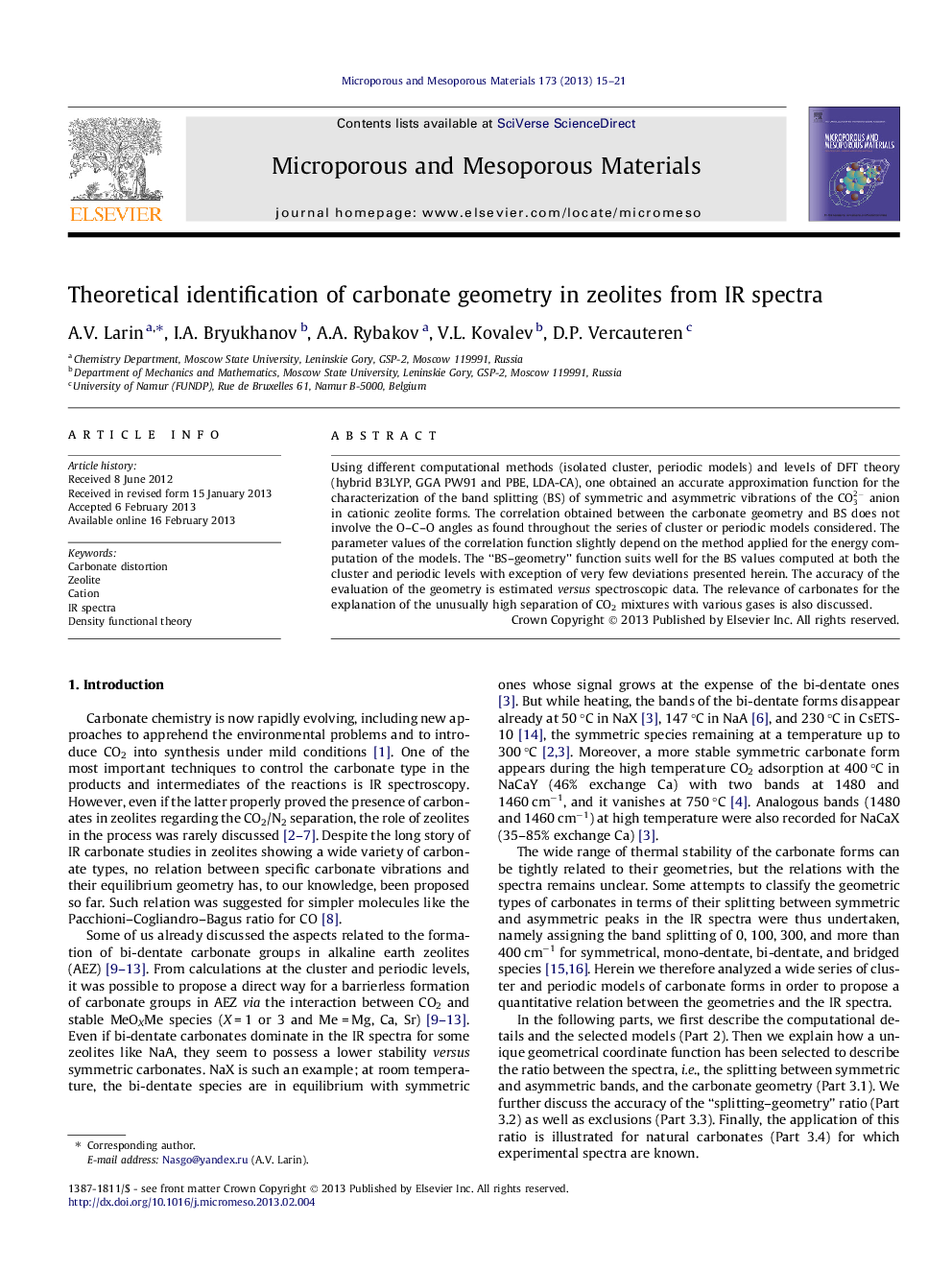| Article ID | Journal | Published Year | Pages | File Type |
|---|---|---|---|---|
| 73497 | Microporous and Mesoporous Materials | 2013 | 7 Pages |
Using different computational methods (isolated cluster, periodic models) and levels of DFT theory (hybrid B3LYP, GGA PW91 and PBE, LDA-CA), one obtained an accurate approximation function for the characterization of the band splitting (BS) of symmetric and asymmetric vibrations of the CO32- anion in cationic zeolite forms. The correlation obtained between the carbonate geometry and BS does not involve the O–C–O angles as found throughout the series of cluster or periodic models considered. The parameter values of the correlation function slightly depend on the method applied for the energy computation of the models. The “BS–geometry” function suits well for the BS values computed at both the cluster and periodic levels with exception of very few deviations presented herein. The accuracy of the evaluation of the geometry is estimated versus spectroscopic data. The relevance of carbonates for the explanation of the unusually high separation of CO2 mixtures with various gases is also discussed.
Graphical abstractThe splitting of symmetric and asymmetric vibrations of CO32- can serve as fingerprint for diversified CO32- geometries. A couple of DFT functionals is tested for various cluster and periodic zeolite (A, X, MOR) models with alkali and alkaline earth cations.Figure optionsDownload full-size imageDownload as PowerPoint slideHighlights► The splitting of symmetric and asymmetric CO32- bands as fingerprint. ► Various cationic zeolite models and methods are applied. ► The cluster approach and periodic boundaries are considered. ► The comparison of carbonate reactivity in minerals and zeolites.
